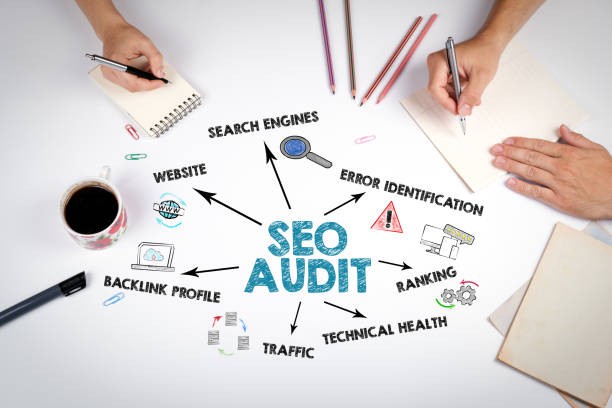Introduction
In today’s digital landscape, having a strong online presence is crucial for businesses and individuals alike. Search Engine Optimization (SEO) plays a pivotal role in driving organic traffic to your website and improving its visibility on search engines. To ensure your website is performing at its best, conducting regular SEO audits is essential. In this comprehensive guide, we’ll walk you through the process of how to do an SEO audit effectively.
How to Do an SEO Audit: A Step-by-Step Guide

Assessing On-Page SEO Factors
On-page SEO forms the foundation of your website’s search engine performance. By optimizing these factors, you can significantly improve your website’s ranking and visibility.
Keyword Research and Optimization
Keywords are the building blocks of SEO. Conduct thorough keyword research using tools like Google Keyword Planner and SEMrush to identify relevant keywords for your content. Integrate these keywords strategically into your content, headings, and meta tags to enhance your website’s relevance.
Content Quality and Relevance
High-quality and relevant content is the cornerstone of successful SEO. how to do an SEO audit your content to ensure it’s informative, engaging, and provides value to your audience. Update outdated content and eliminate duplicate content to prevent cannibalization issues.
URL Structure and Permalinks
A clean and organized URL structure enhances user experience and search engine crawling. Optimize your URLs by keeping them concise, descriptive, and incorporating relevant keywords. Ensure your permalinks are static and avoid using dynamic characters.
Evaluating Technical SEO Elements
Technical SEO ensures that search engines can crawl, index, and understand your website’s content effectively.
Website Speed and Performance
Page loading speed directly impacts user experience and SEO ranking. Use tools like Google PageSpeed Insights to analyze your website’s loading time. Compress images, minimize code, and utilize browser caching to improve speed.
Mobile-Friendliness
Mobile devices drive a significant portion of web traffic. Ensure your website is mobile-responsive, offering a seamless experience across various devices and screen sizes.
Indexing and Crawling
Search engines rely on crawling to index your content. Check your website’s robots.txt file to ensure it’s not blocking important pages from being crawled. Use Google Search Console to identify and fix indexing issues.
Enhancing Off-Page SEO Factors
Off-page SEO involves factors that occur outside your website but impact its search engine ranking.
Backlink Analysis
Backlinks from reputable websites signal authority to search engines. Conduct a backlink audit using tools like Ahrefs or Moz to identify toxic backlinks and disavow them. Focus on acquiring high-quality backlinks through guest posting, influencer outreach, and content marketing.
Social Signals
Social media engagement indirectly affects SEO. Maintain an active presence on social platforms and encourage users to share your content. Social signals indicate content credibility and relevance.
Implementing Local SEO Strategies
For businesses with a physical presence, local SEO is essential for attracting nearby customers.
Google My Business Optimization
Claim and optimize your Google My Business listing. Ensure your business information is accurate, including address, phone number, and business hours. Encourage customer reviews to enhance your online reputation.
NAP Consistency
NAP (Name, Address, Phone Number) consistency is crucial for local SEO. Ensure that your NAP information is consistent across your website, social media profiles, and online directories.
Utilizing SEO Analytics and Tools
SEO analytics tools provide valuable insights into your website’s performance and areas for improvement.
Google Analytics
Google Analytics offers comprehensive data on user behavior, traffic sources, and conversion rates. Monitor these metrics to identify trends and make informed decisions.
Search Console
Google Search Console provides insights into your website’s search performance, index status, and crawling errors. Use it to identify and fix technical issues affecting your site’s visibility.
Conclusion
Conducting an How to do an SEO audit is a crucial step in enhancing your website’s search engine performance and driving organic traffic. By optimizing on-page elements, evaluating technical aspects, leveraging off-page strategies, and focusing on local SEO, you can establish a strong online presence. Stay informed about the latest SEO trends and continuously refine your strategies to stay ahead in the digital world.
FAQs
What is the purpose of an SEO audit?
An SEO audit helps identify strengths and weaknesses in your website’s SEO strategy. It helps you uncover areas for improvement and develop a plan to enhance your website’s search engine performance.
How often should I conduct an SEO audit?
It’s recommended to conduct an SEO audit at least once every six months. Regular audits ensure that your website remains up-to-date with the latest SEO trends and best practices.
Do I need technical expertise to perform an SEO audit?
While technical knowledge can be beneficial, many aspects of an SEO audit can be performed using user-friendly tools and guidelines. However, consulting with an SEO professional can provide deeper insights and recommendations.
Can I improve my website’s ranking quickly after an SEO audit?
SEO improvements take time to yield results. While some changes might have an immediate impact, significant improvements in ranking and visibility require consistent effort and patience.
Are paid SEO tools necessary for an audit?
Paid SEO tools can provide more comprehensive insights, but there are also many free tools available that can help you conduct a basic SEO audit effectively.
How can I stay updated with the latest SEO trends?
To stay informed about the ever-changing SEO landscape, follow reputable SEO blogs, attend industry webinars, and participate in online forums where professionals discuss current trends and strategies.